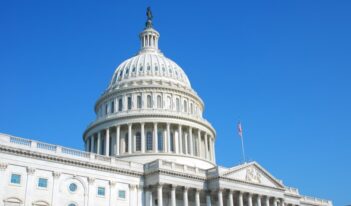
By creating internal rules on rulemaking, agencies can increase underserved communities’ access and participation.
Last fall, the Administrative Conference of the United States (ACUS) sponsored a public forum that addressed participation in administrative decision-making processes by, in the language of the executive order that inspired it, “people of color and others who have been historically underserved, marginalized, and adversely affected by persistent poverty and inequality.”
A companion forum held a few weeks later addressed public participation in notice-and-comment rulemaking, although much of its focus, not surprisingly, was also on equity. It is hard to talk about one without the other.
Forum participants offered important insights and even practical suggestions about equity that all agencies should consider. Most were in response to three questions. How should agencies identify underserved communities? What value does their participation confer on agency decision-making? What institutional forms should participation take?
The sometimes disparate answers participants gave to these and related questions call forth another question that anyone in earnest about procedural reform must ask. How can participation by underserved communities in agency decision-making processes be institutionalized by and through administrative law?
Proponents of reform should resist the obvious temptation to call for statutes or executive orders specific enough to prescribe participatory processes at an operational level across all or most administrative programs.
There is far too much heterogeneity among agencies—in the structures of their decision-making processes and the statutes they administer—to decree general, trans-substantive participation rights of any useful particularity.
This conclusion will become obvious as soon as one asks the question from which all others follow. Which communities’ views should be given some special solicitude? The answer at one agency, or one program within an agency, will often be different than at another.
The limits of general participation directives here are reflected in the most ambitious and thoughtful progressive rulemaking reform bill introduced this Congress: H.R. 6017, the Stop Corporate Capture Act.
H.R. 6107’s robust equity and inclusion section affirms the importance of underserved communities’ participation in the rulemaking process, but it neither defines underserved communities nor specifies the processes agencies must establish to make their voices heard.
Instead, the bill establishes a new Office of Public Advocate within the Office of Government Ethics charged with “developing and coordinating social equity definitions” across the government and helping agencies “facilitate means by which individuals and populations that have not been traditionally invited into the rulemaking process may be better included.”
The point here is not that the bill is insufficiently specific—it is that the bill could not be any more specific in a useful way.
One might counter by citing the Regulatory Flexibility Act, which imposes special consultative obligations on agencies before they adopt regulations that might adversely affect small businesses.
But that statute is concerned with the interests of a single discrete and objectively ascertainable, albeit large, class of regulated firms, which it defines objectively with some precision. And although, as one court has noted, the Regulatory Flexibility Act “instructs” agencies to “assure participation” by small businesses in rulemakings, “the method and manner of doing so is left primarily” to the agencies’ “sound discretion.”
If the details of public participation processes for underserved communities must be worked out agency by agency, if not program by program, where and how should that happen?
Proponents of enhanced participation for underserved communities might well consider the advantages of tasking agencies with designing their own processes rather than having them imposed from on high by Congress through statutes or the President through executive orders.
This model would allow an agency to design processes—and, in doing so, bring to bear expertise that Congress and the President do not have—tailored to the needs of particular programs. It would also allow an agency to review and revise its processes from time to time to account for new circumstances and insights gleaned from studying how they have worked—or not worked.
Methods of review and evaluation could even be built into the processes at the very outset. As a 2017 ACUS recommendation observes, administrative programs can be designed at the outset to facilitate “regulatory learning” over time.
Agency-designed processes would, on this model, be reflected in administrative law, but it would likely take the form of “internal administrative law.”
Agencies would adopt and publish rules specifying their processes (usually after receiving public comments) that would be binding and enforceable within the agency. That is, they would direct the activities of personnel who manage administrative processes. But they would leave high level, politically accountable agency officials free to modify them in application as circumstances warranted.
Agencies would presumably draft these rules of participation so as not to render them externally enforceable—that is, by the courts on judicial review. When and how that can be done are sometimes hard questions without easy answers. They would at least draft the rules to retain discretion with respect to their application in particular rulemakings, or other policymaking formats to which the rules might apply.
True, sometimes agencies may choose to “self-regulate,” in Elizabeth Magill’s phrase, and even do so by inviting judicial enforcement of the self-imposed commitments reflected in rules.
But I suspect that few agencies would want to invite federal judges to superintend decision-making processes bound up with politically fraught issues of racial, ethnic, and gender identity, no matter how much deference agencies would receive. There is also no reason to believe that judges would be very good at it, except to address clear constitutional transgressions that could conceivably arise in this context.
The basic approach outlined here finds support in a 2020 ACUS recommendation aptly named “Rules on Rulemaking.”
It recommends that agencies enact rules that set forth the policies and procedures they will follow in all stages of rulemaking, including the critical stage when a proposed rule is under development, and it identifies specific subjects that agencies should consider addressing.
One such subject it identifies is obtaining feedback from “historically underrepresented or under-resourced groups.” Many agencies have rules on rulemaking, but few address this subject directly, and none of which I am aware of address it in any detail. There is much work to be done here.
I do not mean to deny a role for high-level directives, whether in statutes or executive orders, that pronounce on matters of public participation at high levels of generality, as executive order 13,985 does for the most part. To the contrary, such directives might be advisable or necessary for at least practical two reasons.
The first is to prompt action by agencies. This is an area rife with foot dragging, some of which is understandable in today’s political climate. The second is to impose reporting requirements that would allow policymakers and the public to access agency compliance.
There is, finally, another, more lofty reason that commends general directives in this area: to compel our highest ranking political officials to deliberate about and reach agreement on general principles that account for and maybe even––when our politics is at its best–– reconcile sometimes contested views of equity and inclusion in administrative law.
The views expressed here are those of the author and not necessarily those of the Conference or the federal government.
This essay is part of a nine-part series entitled Creating an Administrative System for All.




